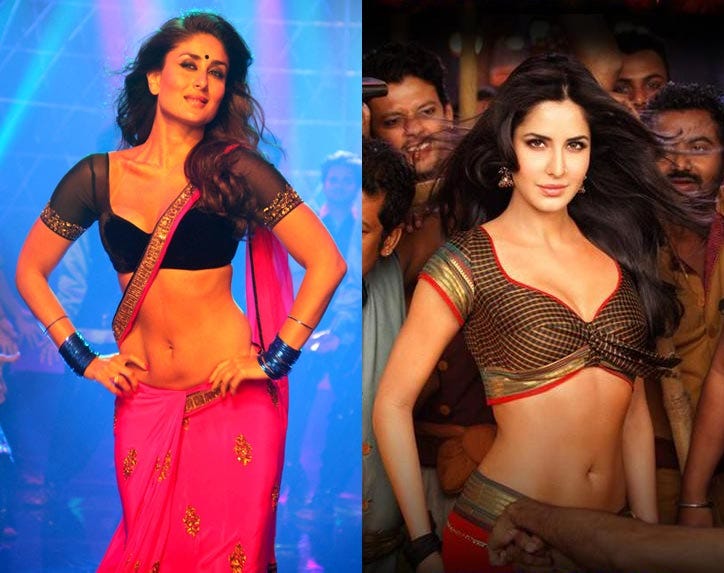“No.”
The above word is a sentence in itself. It signifies the unwillingness of a person to be engaged in an activity or event. These two letters have enough power to refuse that which the speaker disapproves of. They do not owe an explanation regarding the sentiment behind it to anyone. It sounds simple and effective, a single word indicating preferences. However, the word usually does not translate into its meaning when a person, especially a woman, says it. This fact is clearly depicted and rather reiterated by the Indian entertainment industry, primarily by the Bollywood industry.
Our entertainment industry comprises of multiple layers of portrayals which conceal the truth about what our society thinks about assent and consent. Our society is entrenched within patriarchal norms. Most of what we see on the big screen today reflects the harsh and brutal mindset of this patriarchal setup. Movies in the Indian cinema, be it Malayalam, Bengali, Tamil, Bhojpuri, Gujarati, Marathi or Bollywood, are made to suit the palette of the Indian audience for their own gains. However, what both the filmmakers and the audience do not realise is the active production and passive consumption of the negative or sexually explicit portrayal of women and its effect on society at large.
Bollywood is the largest player in the Indian entertainment industry. The impact of Bollywood is wide across the nation than of any other regional cinema. Acts like stalking, public harassment, eve teasing of women are considered as normal and acceptable behaviour by young men today and when they see their favourite actors engaged in similar pursuits resulting in a favourable response from the heroines, it is considered to be the successful formula to garner positive attention from women leading them to apply these in real life too. Take the case of the movie “Rockstar” where the male lead of the movie, Ranbir Kapoor stalks the female lead of the movie, Nargis Fakhri and succeeds in attaining her love and affection. Such scenes embolden the young men of today to ape these examples and practices.
One of the most gruesome crimes against women is also one that is portrayed most explicitly in Indian cinema- Rape. Since ancient times, rape has been perceived as a power tool. The idea of establishing superiority through the act of rape has been reflected in our cinema since decades. The frequency of portraying rape or even assault has been high, at times even when the plot of the film does not require it.
What people fail to understand is the distinction between fiction and reality. Everyone talks about how deep this rape culture is rooted in our society. This fact is acknowledged by celebrities from all fields, especially from the film fraternity. Though we can say that the film industry may not be the biggest cause of the prevalence of rape culture, it does play a major role in influencing young minds. The audio-visual impact of cinema is way higher on the minds of the people, especially the impressionable minds.
When the villain of the movie is engaged in such a predatory act, the audience is seen to support it through cheering, clapping and whistling. The woman is shown to be helpless and unable to fight the perpetrator. This creates an impression in the minds of viewers that women are weak and hence can be exploited. The filmmakers tend to include many such scenes to garner the attention of the audience. What the filmmakers do not seem to realise is that such acts leave a lasting impact on the minds of viewers. It tends to normalise the occurrence of such acts. Hence, if the heroine falls in love with the person who has been sexually harassing or molesting her, the male population would deem that this is the apt way to woo any girl.
The movies generally even show the hero coming in at the right moment and fighting the villains and saving the heroine. However, this does not seem to have much impact. The heroine is still portrayed as the “abla naari” who needs a man to save her honour and her life. Such portrayals tend to create self-esteem and confidence issues amongst the women viewers and thus make them highly dependent on the male members of the family.

The presence and propagation of rape culture in Bollywood has been monumental and we cannot expect it to vanish with the wave of a wand. However, there is immense potential for it to be reduced, thereby advancing the society towards a better future. For this to take place, combined efforts by the audience, the filmmakers and the media is required. The first and the foremost step can be to eliminate the term “item girl”. There is no question about the fact this usage is highly derogatory and absolutely shameful for the status of a woman. Another step that the media can and should take is to not show the teasers of such songs. This will to help reduce the viewership of the audience. This problem of rape culture can be tackled by the filmmakers themselves making a conscious effort to not include “item numbers” in their movies and changing the narrative of the storylines through meaningful dialogue. While most Bollywood songs are definitely catchy and tend to make us groove, what we conveniently forget is the fact that these lyrics are loaded with misogyny, objectification and sexually explicit words. Children sing these songs without even realising the true meaning of the lyrics and this leaves a lasting impact on their impressionable young minds.
Education is one of the long-lasting solutions to the entire conundrum. However, a majority of the producers, directors and actors come from educated classes or from positions of privilege. Multimedia is one of the major tools that should be used to effectively resolve this issue. It becomes counterproductive when the same producers, directors and actors speak about the rising rape culture when they themselves are not making any effort to reduce it.

In the past few years, women-centric movies such as Queen, Piku, Neerja, Chak De India, Kahaani have been well received by the audience. These movies portray women in a comparatively empowered light. The conventional notion of making movies depending on the taste of the audience is slowly changing to pave way for qualitative movies. Though we have a long way ahead in order to change the mindset of the entire society towards women, a million such movies need to be made and the upcoming generations of movie viewers need to be educated to be able to use cinema as a tool for positive change.
Soumya Agrawal is a Volunteer Researcher at One Future Collective and is a passionate student of Public Policy, Economics and Law.